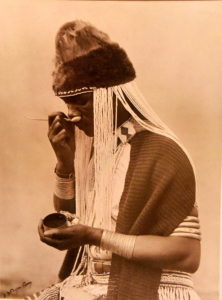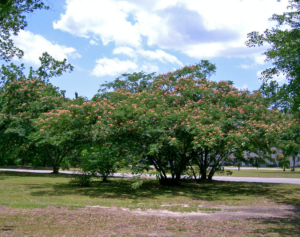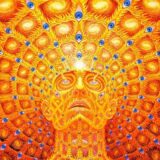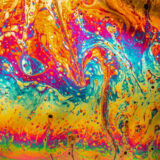Table of Contents
When Were Psychedelic Snuffs First Used?

The History of Psychedelic Snuff
A wide variety of plants have been used as snuff across the globe throughout all of history; However, there are a lot of entheogens which have only more recently (within the last few centuries) become popular. Some of these “preliminary” entheogens have long been considered sacred to many tribes. Many of them have special ritualistic and religious purposes, even being a regular part of a medicine man’s arsenal of botanical remedies. Some of them are more likely to be found in shamanistic rituals for prophecy, spiritual exploration or communication with other beings (or gods). Others uses for snuff include tribal ceremonies and for recreation. There are many psychedelic entheogens still being used today.
Snuff Discovered in the “New World” by the Spanish
South America is the host of a large number of these psychedelic, sacred plants. The continent also birthed much of the recent and modern use of snuff. In fact, South America is responsible for so much of today’s snuff use around the world. The true history of psychedelic use may stretch much deeper, but modern record, specifically European note of psychedelic drug use, indicates the first encounter being only very recent. That said, before there was widespread “Western culture use” of psychedelics such as LSD, mushrooms, mescaline, and more, there was psychedelic snuff.

Upon discovering Native use of snuff for the first time, Spaniard colonist and explorer Friar Ramon Paul documented the perceived effects of the snuff being snorted by the Taino Indians. The Taino were a tribe located in modern-day Haiti, smoking a snuff they called “Kohhobba.” Kohhobba was made from the seeds of a Mimosa tree (native to South America only). The record indicates the Taino used the snuff to communicate with spirits and the dead. It was suggested that the Taino originally retrieved their snuff seeds in trade from mainland South America (or by harvesting it from the mainland), but evolved to cultivating it themselves on-island after a short while.
Essentially, snuff was first discovered and realized in the New World and was known as “Cohoba.” Usually, Cohoba was documented to be a powerful mind-altering substance made from Yopo tree seeds. Yopo tree is also known by its scientific name, Anadenanthera peregrina, and its primary psychoactive constituents are N,N-dimethyltryptamine (DMT) and 5-methoxy-DMT. Although these compounds would later be discovered in many other plants throughout the world…their first known use to Western culture would be in the Cohoba snuff discovered by the Spanish during their colonization of South America. Anadenanthera is unique from other DMT-producing plants in that it is orally inactive, unless it is prepared/ingested with other ingredients.
There is also a lot of documentation surrounding “Yopa” seeds being combined with tobacco to produce a powerful snuff. Specifically, this practice was prevalent along the Rio Guaviaro in Colombia. This snuff would make the Indians drowsy and tired, many of them going to sleep shortly after using the snuff. The Indians would then experience demonic, prophetic dreams, showing them an array of corruption, problems and revelations of all types. The Indians swear by the revelations and visions, calling them absolute truth. Even Indians whom were provided visions and dreams of their death, fully believed the prophecies.

Another account of early snuff use (specifically Cohoba) is recorded about the Otomac Indians of Orinoco. Orinoco is a region between Venezuela and Colombia. This tribe referred to the snuff as “Yupa.” It was documented to be extremely inebriating, making the Indians confused and irrational. Sometimes, they would become quite angry, as the snuff made them strongly irritable as well. Yupa was often used before war, being accompanied by self-inflicted wounds (for a blood-drenched, scary look) and outrageous, intimidating dancing. The Indians believed the Yupa would make them fight like viscous jaguars.
Is Snuff Still Used Today?
Many tribes and cultures still make use of snuff today. As far as modern native use goes, there are still tribes throughout the Amazon which you snuff today. Among the many snuffs which have graced the Amazonian tribes, there is one particular snuff known as “Virola Snuff,” that has been particularly common in more recent years. In some of the cultures that still use snuff today, it is restricted to medicine men or shaman. In the case that it is a shaman – only substance, it is typically employed for prophecy, medicinal, diagnosis, or other religious type of purpose.
There are natives around the world whom use snuff ceremonially, sometimes only once or twice per year; and then there are also natives whom use snuff more frequently, sometimes even daily. There is one tribe, the Waika, whom are known to allow teenagers to partake in ceremonial Epena. This ceremony is an annual celebration by which the participants snort a lot of this snuff over the course of 2 to 3 days. Sometimes, as much as 3 teaspoons are snorted at one time. These natives use long, ceremonial Epena tubes to make the ritual easier.

A lot of native tribes throughout South America, especially Colombia and Venezuela, have been known to be completely overtaken by snuff use. In fact, snuff, like Epena, has become so popular at some points in time that the entire population of a tribe partakes. In many instances, entire tribes seem to be under a hypnotic, dance-like intoxication that can lead to happy celebrations, mad fits of rage, and all types of unnatural maneuvers. Sometimes the mood is quick to change. In some tribes, snuff containing super high quantities of DMT have been ingested ritualistically, and routinely (even daily for some time) in dangerously high amounts. In some reports, there are Virola snuffs with DMT content well exceeding 10 and 11 percent.
Although there is little direct evidence (archaeological, for example) of snuff use in ancient times, there is a plethora of folklore surrounding shamanic and ritualistic use of many snuffs. Snuff seems to be present in a number of myths among the tribes of South America, many of which suggest ancient use. The use of snuff was so prevalent in the 1500s, that much of Western culture knowing of the practice believed it must have been around for a lot longer. There there are many detailed accounts of shamanic use of snuffs, both smoked and inhaled, for prophecy. There is one very well known account from 1571 of an Incan shaman (or medicine men, as in some reports) using snuff to create euphoria, followed by intoxication, followed by prophecy.
Last Words: Ancient and Modern Snuff Use, Where Snuff Came From
Snuff has been very prevalent in recent (last few centuries) history and is still used today in many tribes and cultures around the world. Tobacco snuff is probably one of the most commonly known snuffs, even being used in the United States and other Western cultures. There are most certainly psychedelic snuffs still being prepared in used today for recreation, divination (by shaman), and even for medicinal purposes (usually medicine men). There are also many religious uses for snuffs, especially throughout South America. And there are even recent stories about snuff being used to this very day for tribal celebrations and ceremonies, especially in Colombia and Venezuela. No one may be certain exactly how far back the history of snuff may go, but it is clear that snuff will be around to stay for many years to come.




